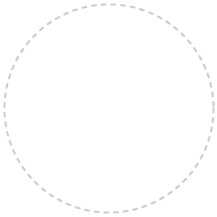


Reflexology Training
Reflexology is a holistic medicine practice that involves massaging the feet. Practitioners maintain that the areas they massage contain reflex points that form a map of the body, and by using finger and thumb massage techniques, they achieve results in corresponding body parts or organs. Holistic medicine promotes healing with little use of surgical procedures or drugs.
Introduction to Reflexology Training
If you are interested in beginning your journey into reflexology this is an excellent starting point. You will by the end of the training be able to complete a full One hour reflexology session. We set up class in a way that it fits into your schedule & we work with you until you understand the basics. Typically, we have 2-3 days of classroom training followed by on-going support. The times and days vary on how much out of class time you invest. What you put in, you will receive from this course. We do not cover hands in this course, our focus is the feet. We will briefly go over the hands & ears so you have an overview, but will not go into detail. This class is designed to get you started and to begin your journey into reflexology.
What to expect...
This class is an intensive. Plan to be here a full day, bring an organic snack to share with the group for lunch. There will also be additional day chosen once the group is confirmed for testing. We are looking for the second day to be within two weeks of class, please check your schedule & let Karam know what days you are available for the testing day.
Upon registration we will set up a meeting to get you your manual prior to class. Please print and read over the manual and begin study prior to class. The more you are prepared the more material we can cover. All are asked to pre-study. Also, the purchase of The A-Z guide to Healing with Pressure points ~ Reflexology by Judith Sachs & Judith Berger would greatly benefit your learning process. In order to accomplish all we need to cover, come prepared to work, with questions from your reading.
Each student at the completion of class will have a basic knowledge of Reflexology & will have the ability to do a full foot reflexology session. We are always available for continued learning & questions, as with any class we teach this is the beginning of a new journey we will be there along the way to aid you in your path.
A Basic Introduction to Reflexology
History
Modern reflexology began around 1917, when American physician William Fitzgerald published his notion that pressure applied to certain parts of the body could affect the health of other parts. Dr. Joe Shelby Riley further developed the theory in the 1920s, and Eunice Ingham, a physiotherapist, promoted it as a therapy for more than three decades, starting in the late 1930s, according to American Reflexology Certification Board. As of 2010, according to the board, 27 states had professional reflexology membership organizations.
Benefits
Reflexology’s clearest benefit is stress relief, according to Barbara and Kevin Kunz, who have published 14 books on the topic, including the “Complete Guide to Foot Reflexology.” They claim that the hands and feet set the tone for the rest of the body and can, therefore, “interrupt the stress signal.” They suggest reflexology can also help to relieve pain, nausea and possibly high blood pressure and cholesterol.
Basis
Exactly how reflexology might achieve its claimed effects is a question without a definite answer. There are several competing theories. One involves the central nervous system, according to the University of Minnesota Center for Spirituality and Healing and the Life Science Foundation: By applying pressure to the hands, feet or ears, the practitioner effectively sends a “calming message” throughout the body. Another is the “neuromatrix theory of pain,” which suggests that reflexology mitigates pain through its relaxing effects. A third is that the technique affects “vital energy”--a concept not found in Western medicine--that, if not in proper balance, can lead to “bodily inefficiencies.”
Philosophy
Reflexologists do not regard themselves as healers, but as facilitators helping your body to heal itself, according to the University of Minnesota Center for Spirituality and Healing and the Life Science Foundation. They strive to “center and ground themselves” and then to “get out of the way” as the body finds its own balance and alignment.


Reflexology Intro Training
-
$444